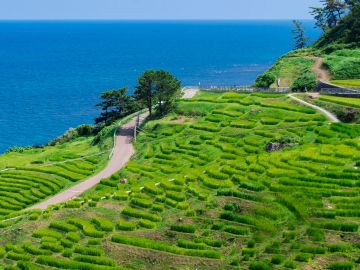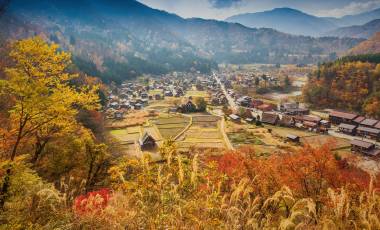We have just returned from this amazing trip. Vietnam certainly lived up to and possibly exceeded our expectations. Vietnam is such a beautiful country – a true feast for the senses, so vibrant and joyful. The Vietnamese people are truly warm, friendly and engaging.
The cycling landscape was very varied through some busy towns, quiet villages, breathtaking scenery and alongside endless rice fields.
The organisation of this trip was truly remarkable thanks to the professional skills of our group leader Son. He absolutely is the best group leader we have ever met on our trips.
Unfortunately, I had an accident half way through the holiday but I have nothing but praise for our wonderful leader Son. He showed such professionalism alongside care, support and empathy, as did all the support team – Lee the mechanic, Tee and Saow our driver. I could not fault any of the team and I felt so lucky to have the love and support of the group members.
The accident did not ruin my trip. I feel so blessed to have seen so much of this beautiful country.
Our hotel rooms were fantastic with available conditioning and a swimming pool available in most of them .
Whale Island was beautiful. The overnight train was an interesting experience and Halong Bay at the end was beautiful.

Cycling in Japan
Japan Cycling Holidays
Top 5 Places for Cycling Tours in Japan
The Noto Peninsula: Situated on the western coast of Japan, the Noto Peninsula is a cyclist’s paradise. With its rugged coastline, rolling hills and traditional fishing villages, this dramatic peninsula is a perfect blend of natural beauty and cultural heritage. You’ll enjoy stunning views of the sea as you ride along the coastline, passing through quaint towns and lush rice paddies. One of the highlights of cycling on the Noto Peninsula is the scenic Noto Kongo Coast Road, which boasts sublime ocean views and challenging climbs that are rewarded with panoramic vistas of the surrounding landscape.
The foothills of the Japanese Alps: Located in central Japan, the foothills of the Japanese Alps provide another excellent cycling destination. This region is known for its pristine wilderness, crystal-clear rivers and traditional mountain villages. Traverse winding mountain roads with a thrilling mix of climbs and descents, with each turn revealing a new panorama of towering peaks and lush forests. Some of the most staggering views can be enjoyed as you ride towards Hida Takayama, also known as Little Kyoto owing to the architecture and tranquility.
The Nagara River: Flowing through the picturesque Gifu Prefecture, the Nagara River is a must-visit destination for cyclists seeking a tranquil and scenic ride. The riverside trail guides you on a peaceful retreat away from city life, with the soothing sound of flowing water and the sight of lush greenery providing a calming backdrop for a more leisurely ride. As you cycle along the riverbank, you’ll pass through charming towns, verdant rice fields and historic landmarks such as the iconic castle. The Nagara River is perfect for unwinding and reconnecting with nature.
Kyoto: Japan’s cultural capital, Kyoto, is not only a treasure trove of ancient temples, shrines and traditional tea houses but also a fantastic cycling destination. The city’s flat and well-designed cycle paths make it easy for you to explore its historic sites and cultural neighbourhoods at your own pace. Head into the iconic Arashiyama bamboo forest, visit the majestic Kinkaku-ji Temple (Golden Pavilion), or cycle along the scenic Philosopher’s Path, lined with cherry blossoms in the spring. Kyoto’s cycling-friendly infrastructure and rich cultural heritage make it a top choice for cycling enthusiasts looking to delve into Japan’s history and traditions.
Tokyo: Japan’s bustling capital, Tokyo, combines modern urbanism with traditional charm. Despite its reputation as a metropolis of skyscrapers and neon lights, Tokyo boasts a surprisingly extensive network of cycle paths and lanes that allow riders to navigate the city safely. From the bustling streets of Shibuya and Shinjuku to the serene gardens of Rikugien and Shinjuku Gyoen, cycling in Tokyo offers a fresh perspective on the city’s vibrant culture, diverse cuisines and dynamic atmosphere.
Karen Harris Cycling Vietnam
Karen Harris Cycling VietnamWe have just returned from this amazing trip. Vietnam certainly lived up to and possibly exceeded our expectations. Vietnam is such a beautiful country – a true feast for the senses, so vibrant and joyful. The Vietnamese people are truly warm, friendly and engaging.
The cycling landscape was very varied through some busy towns, quiet villages, breathtaking scenery and alongside endless rice fields.
The organisation of this trip was truly remarkable thanks to the professional skills of our group leader Son. He absolutely is the best group leader we have ever met on our trips.
Unfortunately, I had an accident half way through the holiday but I have nothing but praise for our wonderful leader Son. He showed such professionalism alongside care, support and empathy, as did all the support team – Lee the mechanic, Tee and Saow our driver. I could not fault any of the team and I felt so lucky to have the love and support of the group members.
The accident did not ruin my trip. I feel so blessed to have seen so much of this beautiful country.
Our hotel rooms were fantastic with available conditioning and a swimming pool available in most of them . Whale Island was beautiful. The overnight train was an interesting experience and Halong Bay at the end was beautiful.
What is the best time of year to visit Japan?
Cycling is a great way to explore the diverse landscapes, rich culture and historical sites of this beautiful country. The best time for cycling trips in Japan depends on various factors such as weather, scenery and local events. To fully immerse yourself in the experience, you should consider these factors when planning your trip to Japan. Spring and fall are ideal seasons for cycling in Japan, with mild temperatures, blooming cherry blossoms and colourful autumn foliage. Summer can be hot and humid, while winter may bring snowfall in certain regions, making it challenging to cycle.
What are the best cycling routes in Japan?
Japan boasts some of the best cycling routes in the world, catering to all levels of riders. Along the Noto Peninsula, you can enjoy dramatic coastal views and explore traditional fishing villages and serene countryside. Equally as beautiful is Kyoto, a vibrant city brimming with rich culture, historic temples, peaceful gardens and charming old streets. If you prefer a more challenging ride, the foothills of the Japanese Alps provide adrenaline-fuelled climbs and imposing mountain vistas. Whether you’re a leisurely rider or a seasoned cyclist, Japan’s diverse trails have something for riders of all abilities.
FAQs on Japan Cycling Tours
Japan is known for its excellent infrastructure, including well-maintained roads, dedicated cycling paths and courteous drivers. Cycling in Japan is generally safe, and cyclists can enjoy their journey without worrying about traffic or road conditions. However, it is essential to follow traffic rules, wear proper safety gear and be mindful of local customs and etiquette while cycling in Japan.
The level of physical challenge on cycling trips in Japan can vary depending on the route, terrain and distance covered. While some routes are relatively flat and suitable for beginners, others may involve challenging climbs and descents that require endurance and stamina. On each of our tours’ page, you’ll find an activity level grading which gives you a good idea of the difficulty and level of fitness required. For more information, visit our Activity Level Guideline Page.
When packing for a cycling holiday in Japan, start by bringing appropriate clothing such as breathable tops, padded cycling shorts and waterproof gear for unpredictable weather. Sunscreen and riding glasses will protect you from the sun during long rides. Other essential items to pack are a water bottle, energy bars, a basic repair kit with spare tubes and tools and a map or GPS device for navigation. On Exodus cycling trips, you’re provided with detailed trip notes that also highlight places of interest.
Yes, at Exodus we offer guided Japan cycling tours. Our guided tours provide expert guides, support vehicles, accommodation, some meals and cultural experiences, making it easier for you to immerse yourself in the local culture and sights. Our professional guides are extremely knowledgeable and will steer you to lesser-known sights off the beaten path as well as the most iconic sites. They will also teach you about the history and culture of each region, providing you with fascinating insights that you might not discover otherwise.
Traditional Japanese cuisine is a culinary experience rooted in culture and history. The vibrant blend of flavours, textures and aesthetics aim to nourish both the body and the soul. Staple ingredients like rice, fish, seaweed, soy sauce and miso are prepared with care and attention to detail. Dishes such as sushi, sashimi, tempura and ramen showcase the artistry and craftsmanship of Japanese cuisine. Traditional Japanese food reflects the country’s respect for nature and seasons, with an emphasis on fresh, locally sourced ingredients. Indulging in traditional Japanese food is not just about satisfying hunger but also a celebration of tradition, skill and mindfulness.
The Adventure Begins Here
Get regular inspiration straight to your inbox from Exodus’ experts.
